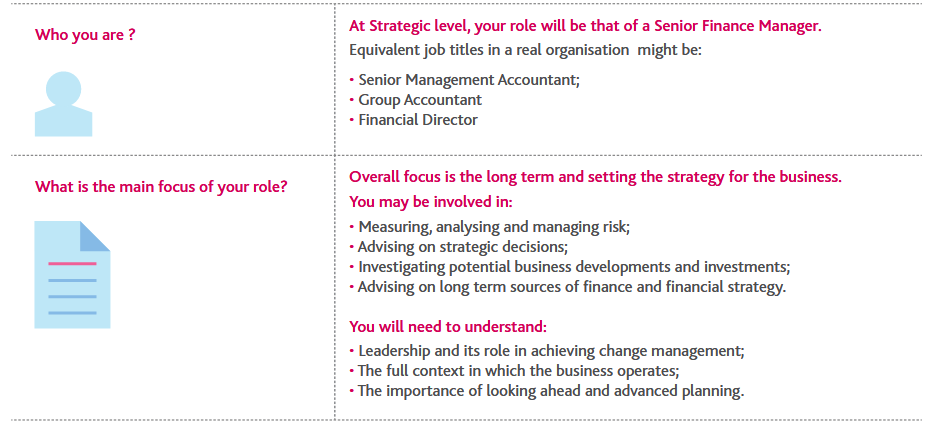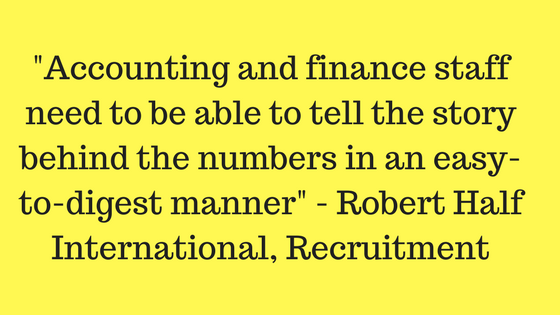
Getting your points down in the strategic case study exam is one thing.
But making them count, so that they score marks and impress the examiner is another.
The examiner reports often comment about poor answers being “too thin” and “under-developed”
But what does that really mean?
What kind of information would a Director in the case find useful?
Providing a fact or an opinion based on your knowledge is a great starting point.
But you shouldn’t stop there. It’s not sufficient to just repeat what is in the scenario. Or regurgitate theory from your P3, E3 and F3 revision.
As a senior manager, the expectations of you are a lot higher. The Board want you to show them the implications for the business, or demonstrate the importance of the advice you are giving.
Show them what could happen, what the knock on effects would be, how to resolve the issues they are facing.

As they say in story writing:
Show, don’t tell.
And this couldn’t be more relevant for producing a strong strategic case study script.
Here’s how you can implement the show, don’t tell, principle to develop answers that expand on your ideas and score highly.
What is the difference between showing and telling?
Before I walk you through an example of how you can show and not just tell in your answers, let’s give a refresher course for those who aren’t sure what the concept is.
Show-don’t-tell is a writing technique that tries to enable the reader to experience the story or piece of content through actions, explanations, and examples. Rather than just basic descriptions.
Essentially, the idea focuses on showing what could/would/should happen with descriptive language rather than simply stating facts, definitions or features.
So how does this apply to business writing? And how can this be used in your strategic case study answers?

Well, you have to understand that the Directors are coming to you for advice for a reason. In your role of Senior Finance Manager you are expected to have a great deal of expertise that they don’t. That’s why they hired you and are paying you a significant salary (hopefully).
Meaning they are looking to you to help them understand what the wider strategic implications will be for proceeding with or rejecting a proposal. Or what they should do to resolve a problem or mitigate a threat.
But again, they don’t want you to tell them.
You can’t simply say, “Minimal disclosure about the proposal in our financial statements will mean our share price remains unaffected by the project” won’t convince or persuade them in their decision making process.”
Why? They don’t know what you’re talking about or how to do it.
That’s why they came to you in the first place. To learn from your expertise!
One of the most powerful ways to “show” with your responses to their requirements is by providing examples with reference to the scenario, pre seen, real world industry or a relevant theory.
It works like this in two simple steps:
- Tell them what your point is (a fact, an argument etc)
- Show them how or why it is relevant to the question they are asking
Let’s look at a practical example…
How “Show and Tell” Were Used in a Past Paper
Let’s analyse the Section 3, Variant 1, August 2017 Strategic Case study exam
Part 1 – How would Big Data analytics enable us to make best use of the data we are gathering?
At present, AutoAuto is already gathering large volumes of data about traffic flows and this could be studied further to extract information that will have value to taxi companies. [telling]
For example, knowing which roads are likely to be slow-moving at particular times of day can be used to plan more efficient routes. [showing]
Big Data can also deal with velocity in data. [telling]
For example, directing drivers to quieter roads could cause congestion there and so it may become quicker to revert to the main roads. This information is also objective and factual because it draws upon accurate feedback from the satellite navigation systems. [showing]
This proposal adds variety to the data set, enabling Big Data to uncover patterns that might be impossible to derive in any other way. [telling]
There is only one model of autonomous taxi and so the performance figures in terms of fuel consumption should be comparable. That should make it possible for Big Data to establish whether it costs more to operate a taxi if it is sent on a slightly longer route where it can drive at a more consistent speed. The fact that engine performance can be managed during journeys will also enable AutoAuto to gather information that could be used to improve fuel efficiency and reliability in the future. [showing]
Part 2 – How would AutoAuto exploit the revenue earning potential from this data?
Ideally, AutoAuto will retain control over this data gathering and will be able to avoid sharing it with Grant Motors. It may be that it could reach an agreement over the ways in which different analytics will be used. [telling]
For example, Grant Motors would have an obvious interest in the ability to gather data about the effect of different engine settings on fuel economy, especially if that can be linked to other factors such as traffic conditions, possibly local weather and so on. AutoAuto might offer to give Grant Motors full access to that aspect of the data in return for agreeing to include the other data collecting facilities in the taxi’s operating software. Even that would create revenue for AutoAuto because it should, hopefully, enable more efficient vehicles to be designed so that the licence fees from the sale of autonomous cars increases. [showing]
AutoAuto could develop a service for assisting taxi companies, which it might sell on a subscription basis. This might identify opportunities such as estimating the profitability of different fares. [telling]
For example, Big Data techniques might enable a taxi company to position its cars to maximise revenue. It may be that there is high demand in the city centre, but traffic is too slow to generate much income and so cars might be located to serve customers located in quieter areas at busy times of day. It might also be possible to identify regular, high-value customers and to ensure that a car is on hand to collect such individuals without them having to wait. [showing]
Part 3 – How should we evaluate the ethical issues associated with this proposal?
The most significant problem is that AutoAuto is collecting some quite private information about passengers. This could be deemed as a lack of integrity on the part of both AutoAuto and the taxi companies. [telling]
The risk could be mitigated if AutoAuto took great care not to identify the passenger in any way, or to use the data collected for any other purpose. For example, it would be unacceptable to send passengers text messages advertising special offers associated with their destinations because this could pose problems if their phones were seen by, say, an employer. [showing]
There could be a question over professional competence and due care if this system meant that some taxi companies did not offer full coverage. [telling]
For example, it may be that a taxi company is unwilling to make a journey to the airport at a busy time if it would be more profitable to use the car to make several short journeys instead. Failing to offer a comprehensive service could put the taxi company in breach of the rules governing the granting of a taxi licence. It could also prove inconvenient for passengers who are relying on the service, only to be let down. [showing]
Part 4 – Would it be appropriate for the Board to ask the Non Executive Directors to make the final decision on the suitability of a potentially controversial proposal such as this?
It would be desirable to involve the whole Board, with non-executives playing a part in the decision. [telling]
The executive directors may be under pressure to accept the more profitable outcome because of profit-related pay or simply the fact that their careers are at stake. Non-executives can clearly be a little more objective because they have no particular reason to bias the decision. The non-executives will, hopefully, have a breadth of experience and a maturity that can help them to reach the correct decision. [showing]
It is probably unfair and unacceptable to let the non-executives arrive at the final decision. [telling]
Giving the non-executives decision making powers would compromise the independence that is a major element of their value. The non-executives are also less involved in ongoing strategic management and may not be as well informed as the executive directors. Finally, the non-executives may be unduly defensive in any decisions that they are permitted to make because they have reputations to protect. [showing]
Conclusion
“Showing” is not an easy thing to do.
But without it, passing your strategic case study exam is virtually impossible.
Because the examiner is looking for you to demonstrate the wider strategic implications of a decision that the Board has to make.
Senior management want you to teach them something they didn’t already know.
So you’ve got to be able to help them understand what you’re talking about and how things are done.
You need to use your technical knowledge and business awareness to back up your points.
And you’ve got to show strong people and leadership skills to communicate them well.
One of the best ways to do this is by implementing the show-don’t-tell principle.
You want to show Directors the consequences of making a decision, rather than just stating facts and opinions.
For example, you can’t just say: “Even with a non disclosure agreement, going ahead with the proposal could affect the share price because of strong form market efficiency”
This is not enough. Simply telling them that won’t persuade, influence or convince them to make a decision.
You need to show them why or how something will happen.
Illustrate your points with reference to the scenario, real world industry knowledge, the pre seen, or relevant theory.
So if you want to earn more marks in your strategic case study exam. Show, don’t tell.
Ready to practice this in your strategic case study mock exams?
